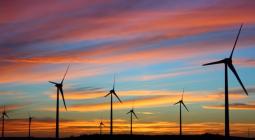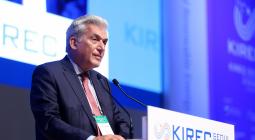Sovereign wealth funds and green financing: Opportunities and challenges.

The 2018 Special Report of the Intergovernmental Panel on Climate Change calls for measures to limit global warming to 1.5 °C, beyond which the risk of drought, floods, extreme heat and poverty for hundreds of millions of people will significantly worsen. There is thus immediate need to implement globally robust climate policies and to transform the energy system swiftly and radically. Changes need to take place in both developed and developing countries, ensuring inclusive growth in accordance with the Sustainable Development Goals (SDGs) of the UN’s 2030 Agenda. For this to happen, fundamental financial shifts need to take place in favor of green finance.
Climate change mitigation and adaptation measures and the achievement of the SDGs necessitate the mobilization of substantial long-term investment capital that has often to be directed in investments that have a much higher social than private impact. In a period of anemic global economic growth and fragile financial markets, there is a limit to how much of the required long-term investment capital will come from private investors, especially for investment in developing countries with thin financial markets. By contrast, large institutional investors like sovereign wealth funds (SWFs) may offer a financing alternative for climate change mitigation and adaptation projects with high social value added.
SWFs may support climate policies and sustainable development through the financing of infrastructure and development projects, through more efficient management of public wealth and its indirect impact on the private sector and through debt and government spending management. Financing of infrastructure and development projects is at the core of development funds and relevant to several SDGs (1, 4, 6, 7, 9, 11, 13 and 17). Efficient management of public wealth (related to SDGs 1, 2, 3, 4, 10 and 16) is of relevance for all the different types of SWFs and particularly important for saving and stabilization funds. With regards to climate policies and solutions (SDG13), SWFs may offer the necessary financing for long term mitigation and adaptation projects with high social impact (relevant to target 13.1 and 13.2). Moreover SWFs may impact on the global capacity to tackle climate imperatives on the global commitment to achieve the climate targets (relevant to target 13.3 and 13A). Last, SWFs operating in least developed or small (island) economies may provide the necessary funding and means for raising awareness and implementing development projects that are aligned with climate targets (relevant to target 13B).
Despite the potential of the SWFs to undertake green investment, the number of funds that engage in such investments and the amount of SWF capital that goes into green financing remains small. According to World Bank estimates, green investments accounted for 0.7% of the total value of all reported SWF deals between 2006 and 2016. While in general SWFs can invest in long-term assets, their short-term liabilities and need to make payments in the near future limit their ability to undertake long-term green investments. In many cases SWFs need to serve policy goals that not always align with social needs and public opinion. In countries where climate is not high in the policy agenda or is not perceived as a high financial risk, investment of sovereign assets into climate-related projects might not be a priority. SWFs that invest in the domestic economies may be subject to political interference that may undermine the macroeconomic objectives of the funds or the realization of viable investments. The financial management of the SWFs is often reviewed against financial benchmarks (e.g. S&P 500). Managers are assessed based on short-term performance. This assessment may discourage from longer-term investments. If these benchmarks are not updated soon, there is a risk that institutional investors will be asked to undertake green financing while they are also penalized for doing so when their performance is assessed. In many cases SWFs are not allowed to invest in the domestic economy. This is particularly the case for oil-based SWFs, which aim at protecting the economy from overheating or Dutch disease effects. Nevertheless, green investments might offer attractive returns in the home country or the home country may have the greatest need for climate-related investments.
Governance and oversight remain detrimental for SWF engagement in climate and sustainable development investments. Good governance is essential for the development of robust long-term investment strategies for SWFs. Political independence is crucial so as to ensure that SWFs’ investments are not politically motivated. Political independence is further important for the acceptance of SWF investments in host countries. SFWs need to develop tangible green investment policies and targets and appropriate performance indices and strategies and to actively participate in sustainable investment coalitions or platforms. Developed, more open and democratic countries and countries in which climate change is high on the policy agenda may bear a greater burden in promoting sustainable investment practices as they are faced with greater pressure on greening their investment portfolios. Their increasing green investments will facilitate the building up of momentum and of a critical mass of sustainable investments. This in its turn may put increasing pressure on more SWFs to join.
[1] Based on Tsani, S. and Overland, I. (2020). “Sovereign Wealth Funds and public financing for climate action” in Encyclopedia of the UN Sustainable Development Goals. Climate Action. Springer, 2020, ISBN: 978-3-319-71063-1.
*University of Ioannina
7 September 2020




